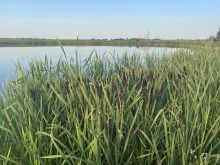REGINA (Staff) – The GPS forms the backbone of the GIS, with input from ‘reds, the field nutrient profile and mapping software. Connected to a laptop, it can direct up to five products simultaneously, each at variable rates for maximum use of inputs.
That statement doesn’t sound much like farm talk, but it could be in the near future.
Precision farming is being touted by many as the future for dryland agriculture.
With the system, farmers manage their crop chemicals and fertilizers through computerized mapping and infrared photograph interpretation.
Read Also

Europe holds promise for Canadian lentils
Pulse Canada is trying to help boost lentil consumption in Europe, which is already the fourth largest market.
Global Positioning Systems are used to locate the exact point of each field operation. It starts with several years of soil sampling to provide constant measurements of crop needs, and ends with harvest monitors that can measure production from a single point in a field and record it for later use. In between are the variable rate seeding and fertilizing controls and GPS-guided computer controlled sprayers.
“The trick will be interrelating all of the layers of information that precision farming tools will give the farmer,” said Marshall Elliason, of the University of Alberta.
Narrow applications
Elliason points out the computer software and hardware to make precision farming a reality already exist, but the ability to use them is lacking in agriculture. “Agronomy has not kept pace with technology,” he said.
To make full use of the technology, say those working in the industry, farmers need a minimum of four years of data collection and analysis. Exact knowledge of each aspect of each field must be known. And then the equipment to take advantage of it must be in place on the farm.
“Thirty or 40 different factors can limit yield and the farmer is still the only one that can make sense of the information all of the tools can provide,” said Elliason.
“What looks like a really even crop can vary by 50 bushels to the acre. The monitors and the computer can tell you what is happening but the farmer still has to interpret all the data,” said Jim Robbins, a Blackie, Alta. farmer who has been working with Global Information Systems and precision farming on his family farm for two seasons.
Yield monitoring in the combine alone shows variables in grain flow from factors such as plugged combines, stops, turns, lag times between pickups and partial swaths or cuts.














